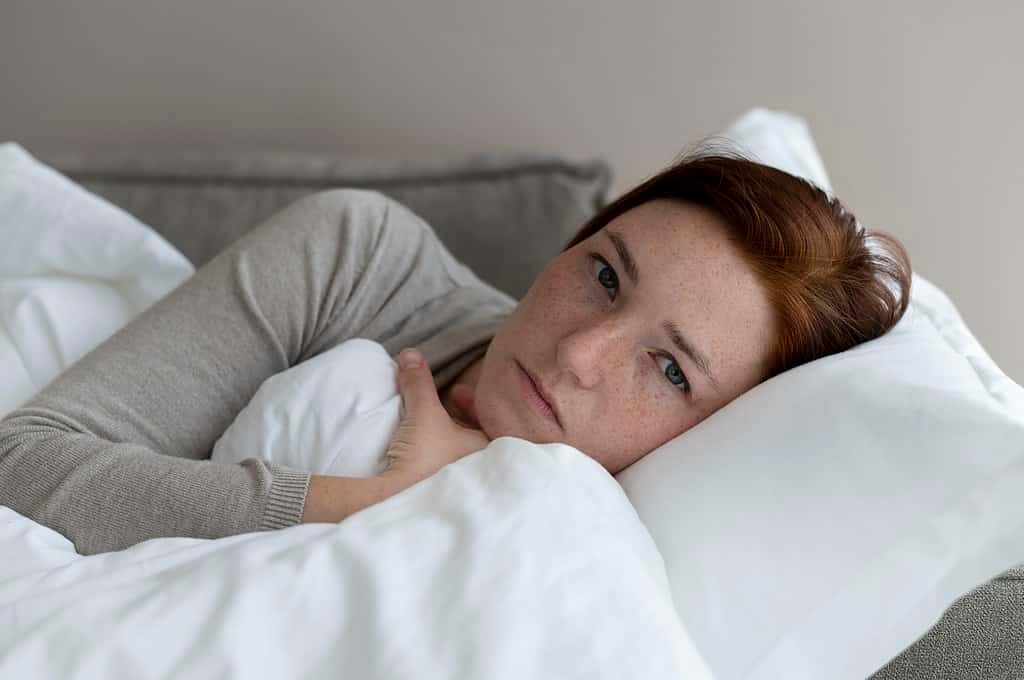The Art of Power Napping: Picking Your Ideal Snooze Spot
Power napping has become increasingly popular as people search for ways to recharge during the day and enhance their mental abilities. Known for its proven benefits on cognitive function and alertness, this daytime rest is meant to be short but impactful. However, choosing the perfect surface to power nap on can be critical in maximising its benefits.
With countless options available, ranging from your office chair to a plush bean bag, finding the ideal surface to nap on can be more challenging than you might think. When selecting a surface for your power nap, it is essential to consider factors such as comfort, posture, and environment. Depending on the type of surface chosen, the benefits of power napping can vary, and certain surfaces may hinder you from reaping the full advantages of this rejuvenating practice.
Key Takeaways
- Selecting a suitable surface is crucial for ensuring a beneficial power nap.
- Factors such as comfort, posture, and environment should be considered in your decision.
- Different surfaces can impact the effectiveness of power napping.
Understanding Power Naps
We all know that feeling – it’s the middle of the day, our energy levels are low, and we could do with a quick wink. That’s where power naps come in! A power nap is a short nap, typically 10 to 20 minutes long, designed to give us a quick burst of energy and increased alertness.
Power naps have several health benefits, such as improving mood, reducing stress, and enhancing brain function. They’re an excellent way to recharge and boost productivity during the day. However, keeping these naps brief is essential, as longer naps may leave us feeling dizzy and disoriented. Many of us might wonder if caffeine and power naps can go hand in hand. The answer is yes! Some people prefer a quick caffeine fix, like a strong cup of tea or coffee, just before they take a power nap. This is known as a coffee nap. The idea is that the caffeine will take effect just as you wake up from the rest, making you feel even more alert and refreshed. It’s important to time this right, though – you don’t want caffeine consumption to interfere with your regular night-time sleep.
Comfort is critical when choosing the perfect resting surface for our power naps. While our usual bed might seem obvious, it’s not always practical if we’re at work or away from home. Alternative options could include a comfy chair, a cosy sofa, or even a yoga mat on the floor. The main aim is to ensure we can enjoy a brief, rejuvenating nap in a supportive and comfortable environment.
Physiological Benefits of Power Napping
We’ve all experienced that afternoon slump when we struggle to concentrate and keep our eyes open. A power nap can be a fantastic way to recharge and refresh our energy levels. In this section, we’ll discuss the remarkable physiological benefits of power napping and how it can positively impact our lives.
- Napping briefly during the day can significantly boost our cognitive abilities. Research shows power naps can enhance memory, improve mental performance, and strengthen logical reasoning [1]. A brief snooze can also help increase alertness and focus, making us more efficient in our daily tasks [2].
- Power naps can do more than improve our mental performance; they can also influence our physical health. Taking a quick nap can support our immune system and help combat daily stress. Moreover, studies suggest that napping can lower blood pressure and reduce the risk of coronary heart disease (3).
- In addition to benefiting our hearts, power napping can also influence our weight management. By keeping our energy levels stable, we might be less inclined to reach for unhealthy snacks or overeat during meals. This can contribute to maintaining a healthy weight and promoting overall well-being.
- Finally, mental health can also benefit from power napping. Incorporating a brief nap into our daily routine may help alleviate emotional stress, anxiety, and fatigue. Feeling more energised and refreshed after a nap can lead to a more positive mindset, allowing us to tackle the remainder of the day with greater resilience.
Footnotes
Impact on Cognitive Function and Performance
We’ve all experienced that afternoon slump where our concentration wanes and our eyelids feel heavy. Power napping may be just the solution to boost our cognitive function and performance. Let’s explore the benefits of a quick daytime rest to our memory, learning ability, and mental sharpness.
- A brief nap of around 5-15 minutes can benefit our cognitive performance. Research has shown that napping in the afternoon improves mental performance, and these benefits are independent of sex and age. Being well-rested positively impacts various aspects of our cognitive abilities, including memory, learning, concentration, and creativity.
- Short-term memory is often the first to suffer when feeling tired or sluggish. A power nap can help refresh our minds and restore our short-term memory by allowing our brains to consolidate new information. This could be helpful when learning new skills or navigating a busy workday.
- Long-term memory also stands to benefit from a quick nap. Longer naps of up to 30 minutes can produce improved cognitive performance that lasts many hours after waking, although they may cause temporary sleep inertia immediately after waking {source}. This extra boost for storing and retrieving information is crucial for tasks requiring high attention and focus.
- Having a sharper concentration enables us to tackle complex tasks more effectively. With a quick power nap, we might find ourselves better able to stay focused, resulting in increased productivity throughout the day. Additionally, a well-timed nap could be just the thing to spark our creativity. By giving our brains a break, we can tap into new ideas and approaches that could otherwise have remained hidden beneath mental fatigue.
Guide to Optimal Power Nap Settings
Regarding power napping, we believe creating the right environment is critical. We must consider the setting, distractions, and safety to maximise our short daytime rest.
- First, let’s talk about the environment. Ideally, we should find a quiet space that’s dimly lit. For some of us, using a sleep mask can be a helpful tool for blocking out unwanted light. If possible, we could also try to find a comfortable place to lie down or invest in a nap pod for the ultimate daytime napping experience.
- Temperature also plays a role in the quality of our power naps. Make sure the room is cool before settling down for a snooze. This helps our bodies relax, meaning we can fall asleep more quickly.
- Next up is managing distractions. It’s essential to limit interruptions during our power naps. This might involve silencing our phones or using earplugs to block out noise. By reducing distractions, we give ourselves a better chance to recharge fully.
- Safety is another factor worth considering, especially if we’re napping in a public place or at work. Finding a secure location or using a nap pod can provide a sense of safety, allowing us to relax and drift off.
- Now, let’s discuss the best time for daytime napping. Prime nap time is usually between 1 pm and 3 pm, though the precise time may depend on when we wake up. This timeframe helps avoid interfering with our night-time sleep and combat post-lunch drowsiness.
Best Practices for Nap Duration and Timing
Regarding power napping, finding the right balance in terms of duration and timing can make a significant difference to our well-being. Adhering to a few specific guidelines can help us maximise our daytime naps.
- Firstly, we must decide on an optimal nap length. While there is no one-size-fits-all solution, most experts suggest napping for 10-20 minutes. During this time, we can achieve some restorative effects without entering deeper stages of sleep that could leave us groggy. Resting 20-30 minutes could improve our alertness, concentration, and creativity.
- We shouldn’t sleep for too long, though. Napping for more than 30 minutes could make us feel groggy and disrupt our regular sleep pattern, potentially leading to insomnia or exacerbating existing sleep issues.
- It’s essential to consider the timing of our naps as well. The best time to take a power nap is between midday and 3 p.m. when our natural energy levels dip. This coincides with the so-called ‘post-lunch slump,’ which makes us more likely to feel sleepy during this window.
- Combining a short nap with caffeine consumption can be a powerful tool to boost our energy levels. Having a coffee before taking a nap is known as a coffee nap. The idea is to drink caffeine right before our nap, allowing the effects to kick in as we wake up, giving us an extra energy boost.
- As with any sleep-related activity, we must use these guidelines in a way that works best for us and aligns with our unique needs and lifestyle. Experimenting with different nap lengths and timings might be necessary to find the perfect balance and optimise our daytime snooze experience.
Addressing Sleep Inertia and Grogginess
We all know that feeling of grogginess when waking up from a nap, right? That sensation is called sleep inertia, and it occurs when we wake up during non-REM sleep, deep sleep, or slow-wave sleep. We must time our naps correctly and choose an ideal resting surface to reduce sleep inertia and grogginess.
- First, we need to limit our naps to around 20 minutes, as this will lower the chances of waking up during deep or slow-wave sleep. When we stick to this duration, we’re more likely to wake up during stage 2 sleep, which means less groggy feelings and an easier time getting back into our daily routine.
- Now, let’s talk about your napping environment. Choosing a comfortable and supportive surface to lie on is vital, as it can improve our sleep quality. Aim for a surface that provides just the right firmness – not too soft but not too hard, either. It should also be breathable and able to regulate temperature, as we all know how uncomfortable it can be to nap when it’s too hot. In addition to selecting a perfect resting surface, we can do a few other things to minimise grogginess upon waking. First and foremost, pay attention to our sleep hygiene. This involves creating a relaxing pre-nap routine, ensuring our sleep environment is calming and free from distractions, and avoiding caffeine or heavy meals before napping.
Comparison of Sleep Cycles and Nap Types
We must understand the different sleep cycles and nap types in our quest for the perfect daytime resting surface. Sleep is typically divided into two main stages: REM (rapid eye movement) sleep and non-REM sleep. Non-REM sleep is further broken down into three steps: stage 1, stage 2, and stage 3 sleep.
- During a night’s sleep, we usually cycle through these stages several times, with REM sleep lengthening each time. On the other hand, power napping is a brief period of rest specifically designed to avoid reaching deep sleep stages. This helps us wake up feeling refreshed and recharged without feeling groggy.
- Naps can be classified into different types, each serving a unique purpose. For instance, Replacement Naps are best when we’re sleep-deprived, as they help compensate for lost sleep. These naps typically last for a complete sleep cycle – around 90 minutes – allowing us to complete both non-REM and REM sleep stages. Appetitive Naps and Micro-naps are brief breaks taken during the day, usually lasting 10 to 30 minutes. Their primary purpose is to improve our performance, focus, and overall well-being. These short naps work by focusing on the non-REM stage 2 sleep, which makes up most of our nap time and provides rejuvenating benefits.
- Prophylactic Naps can be pretty helpful for those who need to prepare for an upcoming late night or a period of sleep deprivation. These naps are preventative and can range from 30 minutes to a couple of hours, depending on individual needs.
Insight from Sleep Research
As we delve into the art of power napping, it’s essential to understand the science behind it. In our quest for knowledge, we’ve turned to insights provided by sleep researchers, such as those at Harvard Medical School.
One key aspect we’ve discovered is the importance of our circadian rhythms. These natural, internal processes regulate our sleep-wake cycles, repeating roughly every 24 hours. Our circadian rhythms can heavily influence the effectiveness of our power naps, so it’s crucial to find the right time for daytime rest.
For many of us, our energy levels tend to dip in the early to mid-afternoon, making it an ideal time to take a short nap. However, this isn’t one-size-fits-all advice, as sleep patterns can vary based on factors like being a night owl or a morning lark. Those who work shifts, for instance, might need tailored solutions tailored to their unique schedules. Speaking of sleep researchers, they’ve found that naps lasting 10 to 30 minutes provide the most benefits. Napping for less than 20 minutes can help boost alertness and cognitive functioning without causing grogginess upon waking. Remember that your individual preferences and circumstances will play a role in determining the perfect power nap length.
Understanding the science behind power napping and circadian rhythms can help us choose the optimal daytime resting surface. Paying attention to our sleep patterns, such as those unique to shift workers and night owls, is also vital in maximising our power naps and reaping their benefits.
Health Risks with Frequent Napping
We all love a good power nap, but it’s essential to know the potential health risks of frequent napping. One study found that regular napping was associated with a 12% higher risk of developing high blood pressure. High blood pressure, or hypertension, can be a precursor to several health issues, such as cardiovascular disease, vascular disease, and coronary heart disease.
Another concern with frequent napping is its potential link to obesity and type 2 diabetes. Lengthy or excessive napping during the day can disrupt our night-time sleep patterns, leading to poor sleep quality. Poor sleep quality has been linked to an increased risk of obesity and type 2 diabetes. We must balance napping and sleeping properly at night to maintain a healthy lifestyle. Frequent napping has also been correlated with a higher risk of stroke, as mentioned in a large-scale study. This can mainly concern those at risk for cardiovascular diseases and other health issues.
We must understand the potential risks of frequent napping while appreciating the benefits of an occasional power nap. By being mindful of our napping habits and monitoring potential health issues, we can continue enjoying power napping without jeopardising our well-being.
Napping in the Workplace
We’ve all experienced that afternoon slump where we may struggle to stay focused and productive. Wejeopardising that power naps can be the ideal solution for boosting workplace productivity. A power nap, lasting around 10-30 minutes, offers a quick dose of rejuvenation without falling into deep sleep [1]. So, how can power napping benefit us at work, and what options are available for the perfect daytime resting surface?
- Power naps have significantly increased alertness, cognition, and mood, making employees more productive and efficient throughout the day [2]. These short naps are considered more performance-enhancing than caffeine! So, if you’re an employer looking to improve your team’s productivity, encouraging power naps can be an excellent way of achieving this.
- Now, let’s talk about nap surfaces. Depending on the work environment, we’re faced with varying options. Some companies have adopted designated nap rooms with cosy reclining chairs or bean bag loungers. Others have embraced a futuristic approach by introducing nap pods, specially designed private capsules with comfortable mattresses, and noise-cancellation features [3].
- If your workplace doesn’t have a designated nap area, don’t worry! Simple solutions can include finding a quiet corner in the office and resting your head on a desk pillow or using a conference room chair for a quick snooze [4].
- Another great idea for an effective nap at work is the ‘coffee nap’. The concept is simple: drink coffee, then take a 20-minute power nap. Caffeine takes around 20 minutes to kick in, so you’ll wake up from a refreshing slumber just as the caffeine takes effect. Therefore, combining the benefits of power naps with caffeine can give you an extra energy boost [5]. Whether it’s a designated nap area, a simple office chair, or a sophisticated nap pod, choosing a suitable daytime resting surface can help make the most of this beneficial practice.
Footnotes
- https://blackroll.com/article/power-nap-the-effective-nap ↩
- https://rest.works/en/article/napping-at-work/ ↩
- https://www.standard.co.uk/escapist/wellness/how-to-power-nap-boris-johnson-b900302.html ↩
- https://blackroll.com/article/power-nap-the-effective-nap ↩
- https://www.harpersbazaar.com/uk/beauty/mind-body/a40895603/power-naps/ ↩
Frequently Asked Questions
What are the benefits of taking power naps?
Power naps can bring numerous benefits to our physical and mental health. They can boost our brain function, improve memory, and enhance our mood, all while reducing stress levels and increasing alertness. Power naps can work wonders for our overall well-being when done correctly, especially when added to a balanced lifestyle with regular sleep patterns.
How long should an ideal power nap last?
An ideal power nap should last between 10 and 20 minutes, as this prevents us from falling into a deep, slow-wave sleep and waking up feeling groggy source. However, it’s important to remember that individual needs and preferences might vary, affecting the ideal duration for each person. Experimenting with napping times can help find the sweet spot for optimal rejuvenation.
What’s the best surface for a daytime rest?
The best surface for a daytime rest is one that offers a comfortable and supportive environment. Ideally, a soft and cosy surface can reduce the risk of interrupted rest. As preferences vary, trial and error with various mattresses, cushions, or blankets can help us determine the ideal surface for daytime naps. Finding the perfect balance between comfort and support is critical.
Any tips on waking up refreshed after a power nap?
To wake up refreshed after a power nap, we should ensure our naps do not exceed 20 minutes, as longer naps can result in waking up feeling groggy source. Taking naps earlier in the day, setting a gentle alarm, and planning a brief post-nap activity can help our bodies and minds re-adjust quickly after waking up, feeling refreshed and energised.
Do power naps work well for all age groups?
Power naps can benefit individuals across different age groups – but their effectiveness can vary based on lifestyle, health, and sleeping habits; power naps can help adults, especially those experiencing sleep deprivation or high-stress situations, but they may not be as beneficial for young children who need long periods of sleep for proper growth and development.
What’s the difference between a nap and regular sleep?
Napping is a short period of rest that usually lasts between 10 and 20 minutes, while regular sleep occurs for longer durations, typically overnight. Power naps are designed to quickly rejuvenate us and help us stay alert during the day, while normal sleep helps our body repair and rejuvenate itself over several hours, going through multiple sleep cycles, including slow-wave sleep and REM sleep sources.



